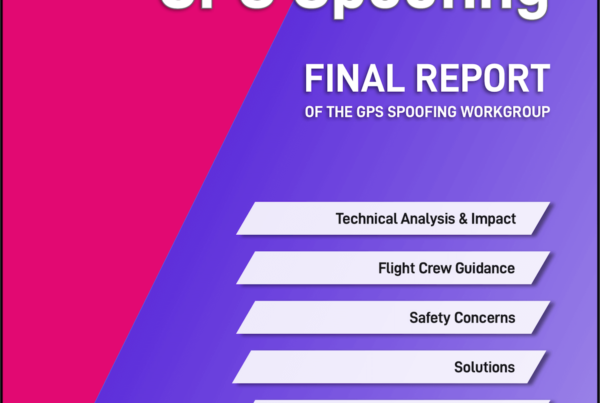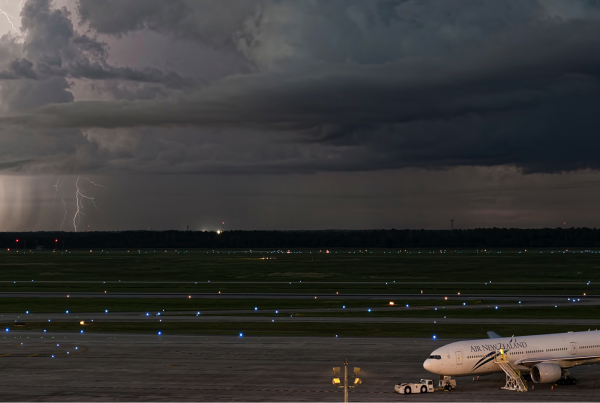42. My aircraft is a 1989 model. I do not think it will require a Digital FDR.
From Amendment 29 to Annex 6 Part II, Paragraph 3.6.3.1.2.2All aeroplanes of a maximum certificated takeoff mass of over 5,700 kg for which an individual certificate of airworthiness is first issued on or after 1 January 2005 shall be equipped with a Type 1A FDR
From Amendment 29 to Annex 6 Part II, Paragraph 3.6.3.1.2.3All aeroplanes of a maximum certificated takeoff mass of over 27,000 kg for which the individual certificate of airworthiness is first issued on or after 1 January 1989 shall be equipped with a Type 1 FDR
From Amendment 29 to Annex 6 Part II, Paragraph 3.6.3.1.2.4Recommendation – All aeroplanes of a maximum certificated takeoff mass of over 5,700 kg up to and including 27,000 kg for which the individual certificate of airworthiness is first issued on or after 1 January 1989, should be equipped with a Type II FDR
43. What is the regulation for a requirement to have a First Aid Kit on Board for a Part 91 or Part 135 aircraft?
14 CFR 91.513 and 135.177
44. How do you apply and what do you say when at the counter requesting the second passport?
Go to the State Dep. web site. Complete the DS82 form.The second, or more, passport will have a 2-year term.
45. Where is the requirement for “Emergency Locator Transmitter” “CUT HERE” placards found? FAR’s, EASA, ICAO?
Chapter 11 of your MM will outline the “minimum” placards you must have for your aircraft. Chapter 11 is written IAW the various FAR’s that govern that specific aircraft, (FAR 23 or 25).
46. If we are a US registered aircraft, flying Part 91 into Canada with passengers, picking up more passengers in Canada, and traveling to another Canadian airport, would that be considered Cabotage?
A U.S. private registered aircraft may enter Canada and then stop at more than one Canadian location and that Canadians can embark, disembark or re-embark during the movement through Canada, along with passengers who are “the same passengers who originate outside of Canada.” That section allows the movement of Canadian originating passengers between those points in Canada only if their presence on board the aircraft is incidental to the primary purpose of the trip and no remuneration is involved. http://www.cbsa.gc.ca/publications/dm-md/d2/d2-1-1-eng.html
47. What are the recurrent training requirements for international procedures?
Specific international operations’ training is not required by the FAA regulations or by Annex 2 to the ICAO. FAA Inspector’s have wide latitude in determining crew qualifications for “Special Use Airspace” and “Special Navigation Equipment”. In the FAA Inspector’s Handbook, Order 8900.1 Volume 4 Chapter 12 it states: “Experience has clearly demonstrated that the presence of sophisticated navigational equipment on board an aircraft does not, by itself, ensure that a high level of performance will be achieved.
It is essential that operators provide adequate training for the personnel operating or maintaining the equipment, and that operating drills and procedures are included in crew training.” At a minimum, private operators are expected to “Be Familiar” with the Oceanic/Remote operation intended. Commercial operators usually need to satisfy a crew training requirement by completing an operator’s FAA approved oceanic operations training program or by completing a commercial provider’s oceanic operations training. Military training records indicating prior oceanic operations experience may be use as proof of training also.
48. Where do I Find This Definition of “Special Use Airspace”?
From the FAA aviation safety inspector’s (ASI) Handbook, (FAA Order 8900.1, VOL.4, Chapter 1).
Examples of special areas of operation include the following:
Areas of Magnetic Unreliability (AMU) and Polar operations
North Atlantic Minimum Navigation Performance Specification (NAT/MNPS) airspace
Central East Pacific (CEPAC) airspace
North Pacific (NOPAC) airspace
Pacific Organized Track System (PACOTS)
West Atlantic Route System (WATRS) and the Caribbean Sea
Gulf of Mexico control areas (Gulf routes)
Reduced Vertical Separation Minimum (RVSM)
Required Navigation Performance (RNP)-10,4 ect.
Examples of special Navigation Equipment include the following:
Area Navigation (RNAV)
Inertial navigation or reference systems INS, IRS or GPS
49. What are the recurrent training requirements for European RVSM?
Europe does mandate RVSM training for crews operating there. But, they do not specify initial, recurrent or mandate a frequency of training. If you have been trained at some point in the past that would be accepted as sufficient. During a SAFA check as long as one can show they have been trained it is sufficient. Joint Aviation Authorities Administrative and Guidance Material, Section One, General Part 3, Temporary Guidance Leaflet No. 6, Revision 1, Appendix 4″
50. Many Jepp charts have TERPS or PANS-OPS notated in the lower left margin. Many have nothing notated (e.g.: Canada, Mexico, Panama). If there is no criteria notated does the pilot assume it is under PANS-OPS or assume it is an unspecified criteria specific to that country?
If not annotated on the chart look in the Air Traffic Control section of the Jeppesen Airway Manual and look up the country rules and procedures for the country you operating in. Specifically, look in the Procedure Limitations and Options section of the countries rules and procedures to determine what criteria they use in the development of procedures. The source document of course is the countries Aeronautical Information Publication.
51. Is MNPS required for the ‘Blue Spruce’ Routes, or more specifically, what operational approvals would be required for those routes, and to fly within Europe, for a small Citation under 12,500#?
MNPS approval for the navigation system is required under this condition. The relief from full MNPS requirement is that only one LRNS is required vice, the two normally. The weight/FAR Part 23/25 certification has no part in this. NAT Document #007, Guidance Concerning Air Navigation in and above the NAT MNPSA Chapter1, Paragraph 1.4.1 and FAR 91.511
52. Are SAFA checks applicable to all aircraft, or only aircraft under 12,500#?
“Safety Assessment of Foreign Aircraft” is a EU check of compliance for all aircraft operating in EU countries. ICAO says any country has the right to do this, (FAA has the same authority here). The weight is not a deciding factor in who gets inspected, just what is inspected or expected. Some items like TCAS or GPWS may not be required for aircraft below a 5,700KG/12,500Lbs weight.
http://www.easa.europa.eu/approvals-and-standardisation/safety-assessment-of-foreign-aircraft-SAFA.php”
53. In regards to IRS time limitations for navigation. Where do I find the reference for this limitation?
Time limits on IRS’s are associated with operating in RNAV 10 airspace. Those limitations are published in FAA Order 8400.12B.
54. Where do I find the requirement to add country of manufacture and N# to the aircraft data plates?
What we are referring to is an “Identification Plate” not the “Data Plate”. The a/c data plate can only be issued/changed by the manufacturer. From ICAO Annex 7: “”8. IDENTIFICATION PLATE”
55. Am I required to have a NAT Track Message onboard for the crossing?
Copies must be available on-board the aircraft. NAT Document #007, Guidance Concerning Air Navigation in and above the NAT MNPSA Chapter4, Paragraph 4.1.1
56. When London Control asks me “What services are we requesting”. What are they asking for?
“Basic Service”, relies on the pilot avoiding other traffic, unaided by controllers/ FISOs. Pilots should not expect any form of traffic information from a controller/FISO. Traffic Service is a surveillance based ATS, where in addition to the provisions of Basic Service, the controller provides specific surveillance-derived traffic information to assist the pilot in avoiding other traffic.
“Deconfliction Service” is a surveillance based ATS where, in addition to the provisions of a Basic Service, the controller provides specific surveillance-derived traffic information and issues headings and/or levels aimed at achieving planned deconfliction minima, or for positioning and/or sequencing.
“Procedural Service” the controller provides restrictions, instructions, and approach clearances, which if complied with, shall achieve deconfliction minima against other aircraft participating in the Procedural Service.
CAP 774 UK Flight Information Services”
57. What document defines “Class Two Navigation” for the FAA?
Any navigation that is not Class One.
FAA Order 8900.1 Volume 4, Chapter 1, Section 4, Paragraph 4-76B.
58. What is a “Minor Repair” to a SAFA inspector in the UK?
A minor repair or modification means one which has no appreciable effect on the mass, balance, structural strength, reliability, operational characteristics, noise, fuel venting, exhaust emission or other characteristics affecting the airworthiness of the aircraft, part or equipment. UK’s CAP 393, Air Navigation the order and procedures, Section3, Item #30
More on the topic:
- More: OPSGROUP is hiring! Wanted: Junior International Ops Specialist
- More: LOA Guide for US Operators
- More: NAT Ops: Flying the Blue Spruce Routes
- More: EU-LISA: New Europe Travel Requirements, the BizAv Guide
- More: NAT Guide 2025 – My First NAT Flight is Tomorrow
More reading:
- Latest: OPSGROUP is hiring! Wanted: Junior International Ops Specialist
- Latest: LOA Guide for US Operators
- Latest: NAT Ops: Flying the Blue Spruce Routes
- Safe Airspace: Risk Database
- Weekly Ops Bulletin: Subscribe
- Membership plans: Why join OPSGROUP?











 Get the famous weekly
Get the famous weekly 




